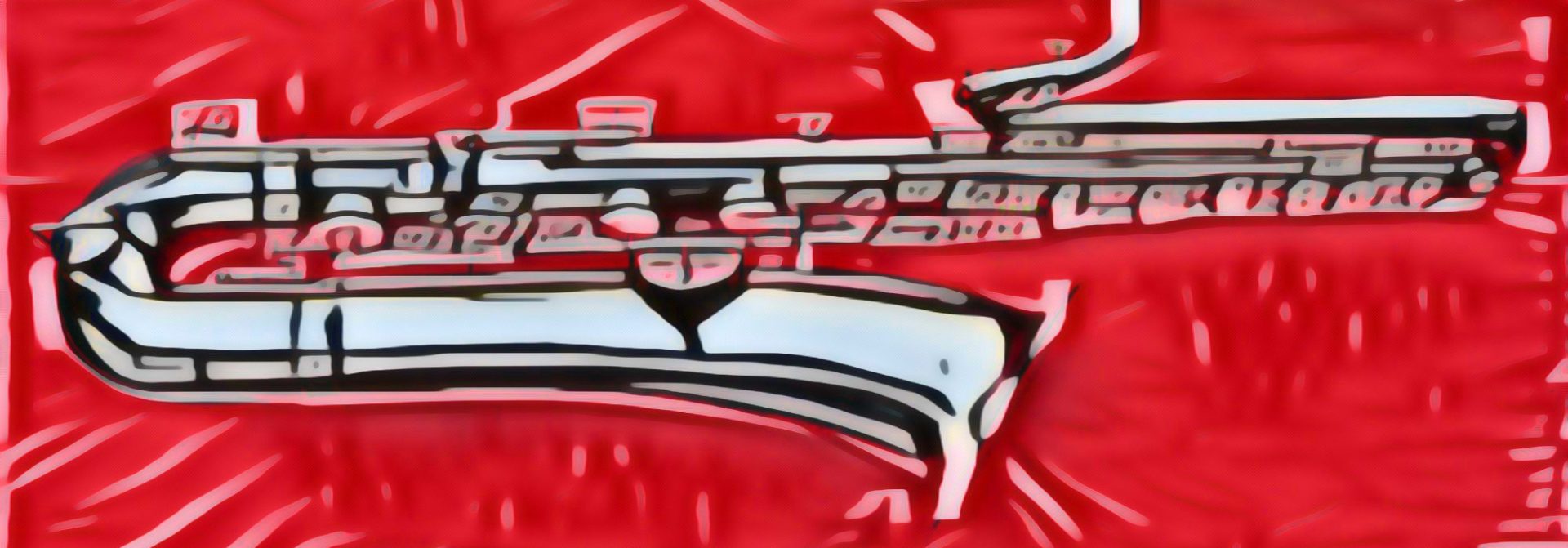Over the past few weeks the name Attilio Berni has been mentioned a couple of times in this blog, in relation to the Oscar Adler Triumph model saxophone. Attilio is the man who runs the Italian Saxophobia project, and has hundreds of the rarest saxophones in the world.
Attilio Berni is also the man who happens to own the one and only subcontrabass saxophone, that was built by J’Élle Stainer of Brazil. Unlike the Bb Tubax built by Benedikt Eppelsheim, which has a cylindrical bore **see below**—and purists will argue is not a saxophone—J’Élle Stainer’s version of the subcontrabass saxophone does possess a conical bore. Purists will thus be happy, and can call it a true saxophone.
Over the next few days I will do a series of posts on this very special saxophone—arguably the largest in the world. Because anything that’s this big, deserves to have more than one article written about it. 😀 These articles will include an instrument overview written by Attilio himself, as well as a photo essay.
This big horn had its European première on January 7, 2012, at the Napoleonic Museum in Rome. The following video is an excerpt of this Saxophobia concert, featuring Attilio Berni on both the largest, and the smallest, saxophones in the world. Enjoy…
_____________________________________________
**Note**
I received a very interesting email from Benedikt Eppelsheim the day after this article was published. He wanted to set the record straight about the Tubax bore. Tubaxes do not have cylindrical bores.
This is what he wrote:
…That is important, because it would not be a saxophone or “saxoid” at all, if it was cylindrical….it would be a contrabass clarinet.
Something like more tapered vs. less tapered would describe the difference well.
I have asked Benedikt Eppelsheim if he would be willing to have me do a series of articles about his unique horns. He has generously agreed. The first horn I will be writing about: you guessed it, the Tubax.



Love it! Ancora Signor Berni, ancora!
When you really think about it, I’m not sure that there are any companies other than J’Élle Stainer and Eppelsheim who are currently innovating in the area of new saxophone voices. (Lopes, another South American company could be a third, but last time I checked their website was down, so I don’t know what’s up with the company.) These companies can either go up or down, and with the current offerings by both of them, personally I’m not sure where there’s left to go.
Much like the Bb Tubax is the quintessential speciality instrument, so too is this subcontrabass by J’Élle Stainer. If we bass players think we have to create our own opportunities to play our horns, then anyone who owns anything larger is really on their own.
Attilio’s Saxophobia project really is the ideal setting for this instrument to shine. It exposes many more people to the possibilities of what a saxophone can be. Pairing the subcontrabass together with the Soprillo allows the audience to truly appreciate the extremes in size and pitch of the same instrument. As an educator, I see this as a fabulous informal educational opportunity, as well as a musical performance.
I suppose they could try to fill in the gaps. Aquilasax is working on an F Mezzo *AND* a C bass.
Interesting, very interesting. I can see the potential market for C bass saxophones, but again, not enough of a demand however that any of the big name brands would take it on.
I have a photo of the 1 and only C Tubax ever made. That speaks volumes. I can’t remember who sent me the pic, but I got it sent to me years ago by someone. The point is, when I asked Benedikt Eppelsheim a couple of weeks ago if he had made any more over the years, he said no. It was a one of, and not one he wanted to promote, since it was not something he foresaw himself building.
Oh yes, forgot this…
Having had the opportunity to actually play a Tubax at Winter NAMM 2010, I can confirm that it is conical like any other saxophone, but has a much narrower cone angle. Of course Benedikt himself has already said this, but I can corroborate. The bell is not much bigger than that of a low A baritone sax, and possibly smaller than that of a low Bb bari (because of the extra flare on low Bb horns). What I found with it was that it responded much like an overgrown bari, except that it seemed to top out at about a mf volume level. Any attempt to push more air through it accomplished nothing except to force the reed shut. It wasn’t unfamiliarity with the setup either — I had brought my bari mouthpiece, and it was very similar to the one that was on the horn before I sat down. (I just didn’t want to play someone else’s mouthpiece!) That said, it was LOUD in there, and the Anaheim Convention Center is a very large place, so it could well be that I just FELT like I wasn’t generating enough sound under the circumstances. It has certainly happened with my own horns in loud venues.
Wow… it seems to me that as nice as it would be to be able to play really fast on it, there is limited utility in doing so. Pitch discrimination gets poorer as pitch gets lower and notes get shorter, since your ear has fewer cycles to sample. Combine the two (low, fast notes) and it comes out sounding like a smear.
For example, if they had played “Donna Lee” rather than “Back Home In Indiana”, at the same moderate tempo, we fellow musicians would have been impressed, but even we wold have been hard-pressed to distinguish individual notes. Certainly a clunky mechanism is to be avoided if at all possible for the ease of the performer, but to some degree it is inevitable in something this large. I suspect that the folded shape is both a blessing and a curse in this respect. It makes some linkages shorter but more complex, and others more complex with no distance benefit to speak of. However, if *I* had to tote that thing around, I’d be quite appreciative of the packaging. In its current form it more closely resembles a tuba than a traditional saxophone. That’s not a bad thing, as tubas are pretty maneuverable for instruments of their total length.
I see more of an application for this instrument in saxophone ensembles, where it would play the role of an orchestral bass — and those typically don’t have to move at lightning speed. Even when they do, basses suffer from the same indistinct pitch phenomenon as any other low instrument and are usually accompanied an octave higher (by dividing the basses or using the cellos). This is what makes it possible to follow what they’re doing. A look at many orchestral scores shows that in such cello/bass doublings, the bass part is often simplified because it is assumed nobody is going to notice the missing notes anyhow.
I guess I’m saying that this instrument does not have to be perfect to be useful! If it is typecast, it is almost by physical necessity. We just can’t process low notes that go too fast.
Well stated. I I had already thought this but could not manage to state it clearly with words.
Hoosier Sax Man? 😆
This and the next post are amazing Helen. I would love to hear these fab instruments in person. Do you think the player’s back teeth rattle when they play the pedal notes?
Bloody ‘ell!
the lenses fell out of my glasses!
jim